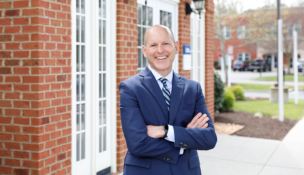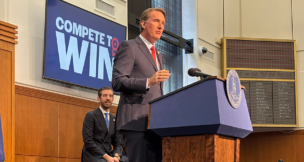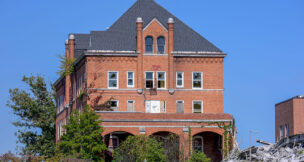New job description
School presidents need additional skills as responsibilities expand
New job description
School presidents need additional skills as responsibilities expand
On the day Carlyle Ramsey announced plans to retire after two decades as president of Danville Community College, the college also revealed that its first major gifts campaign had surpassed its $7 million fundraising goal.
Fundraising didn’t used to be on the plate for community college presidents, but these days it’s the air they breathe because of dramatic declines in state support.
“If there has been a change over the past 20 years, it’s the expectation that [community college presidents] must be able to develop fundraising activities — serious funds,” says Ramsey.
In Virginia the average state funding per student at community colleges fell 36 percent from 2006 to 2011, from $4,602 to $2,946, according to a survey by Insider Higher-Ed, an online higher-education news service.
But becoming fundraiser-in-chief is not the only new role community college presidents have had to assume in an era of rapid change. As he prepares to step down Aug. 1, Ramsey explores the challenges that community college presidents face and the changes that lie ahead.
School safety
If anything keeps Ramsey up at night, it’s concern about safety. When he joined the college, administrators’ principal safety concern was warning students to lock their cars and watch their wallets and purses.
Those days are long gone. “After Columbine, after Virginia Tech, everything changed. Safety is uppermost in your mind,” Ramsey says, reflecting on the mass shootings at Colorado’s Columbine High School in April 1999 (15 dead) and at Virginia Tech in April 2007 (33 dead).
“After Virginia Tech, we invested hundreds of thousands of dollars on cameras in every building, down the corridors. This is like 1984, a brave new world.”
Retooling for jobs
Danville once was home to the world’s largest textile mill, owned by Dan River Inc. It also thrived at the heartland of Virginia’s tobacco business. Now both of these industries largely have been swept away by the tides of change.
The nation’s once formidable textile industry has moved overseas, spurred by cheap labor, and the tobacco industry has weakened as government regulations tightened and the smoking population declined. People who once had well-paid positions in those industries had to retrain as jobs vanished.
The community college became the focal point of that retooling, Ramsey says. “We got hit big time, and we had to build partnerships,” he adds.
Glenn DuBois, chancellor of the Virginia Community College System, says community college presidents increasingly are catalysts for regional change, especially in rural areas. “The president is the lead chef or the choreographer,” DuBois says, often bringing together such diverse elements as industrial employers, chamber of commerce officials and K-12 school administrators to create plans for work-force development.
A new skill set
Norma Kent, senior vice president for communications and advancement at the American Association of Community Colleges in Washington, D.C., says that being a community college president is a much harder job than it used to be.
In fact, Kent says, the association is revising its list of leadership competencies that will help guide the selection of community college presidents nationwide.
She reiterates Ramsey’s point that community college presidents increasingly are going to be responsible for creating new sources of revenue. “They’re going to be more externally focused,” Kent says.
That’s only the beginning. Presidents also are becoming more accountable for students’ performance, including their graduation rates, and that will be tied to the funding colleges receive. “They’ll be data driven,” Kent says. “You say your college is doing well, ‘Then give me the numbers.’”
Economic engines
Angeline Godwin, in her first year as president of Patrick Henry Community College in Martinsville, brings many of the skills community colleges are seeking in presidents these days, especially in the area of work-force development and job creation.
She has worked extensively in public and private economic development positions as well as in community colleges, and she holds a law degree in addition to a doctorate in English.
Community colleges, Godwin says, “are absolutely economic engines” in their communities. Programs offered by community colleges are especially important in a place like Martinsville, which consistently records the highest unemployment rate in the commonwealth.
Godwin believes that the barriers between academic course work and work-force development training are beginning to dissolve.
“No matter what road students start on, they want to have a job,” Godwin says. “We want to allow people to come into a college, then move into the work force and move back and forth throughout their entire lifetimes” as the economy dictates new skills.
Reducing costs
Edna Victoria Baehre-Kolovani, president of the 46,000-student Tidewater Community College (TCC), says a fundamental tenet of community colleges is their ability to provide access to a good education at an affordable cost.
As a result, community college presidents must not only be good fundraisers, but they also must be innovators in reducing the cost of education.
That aim motivated TCC’s plans to offer an associate degree in business education in which students will pay nothing for the textbooks. “It is really our job to look to reduce the cost of textbooks,” Baehre-Kolovani says.
Beginning this fall, students participating in the pilot project — the brainchild of Daniel T. DeMarte, the college’s chief academic officer — will use free “open-source” textbooks and other materials that are readily accessible in the public domain.
The college projects that students who complete their degrees through the initiative will save one-third the cost of college, $2,000 to $2,500 each during the two-year course of study.
Reducing textbook costs, Baehre-Kolovani says, can help students stay in college and obtain degrees. “The ones who come to a community college are often the ones least able to go to college,” she says.
e
















